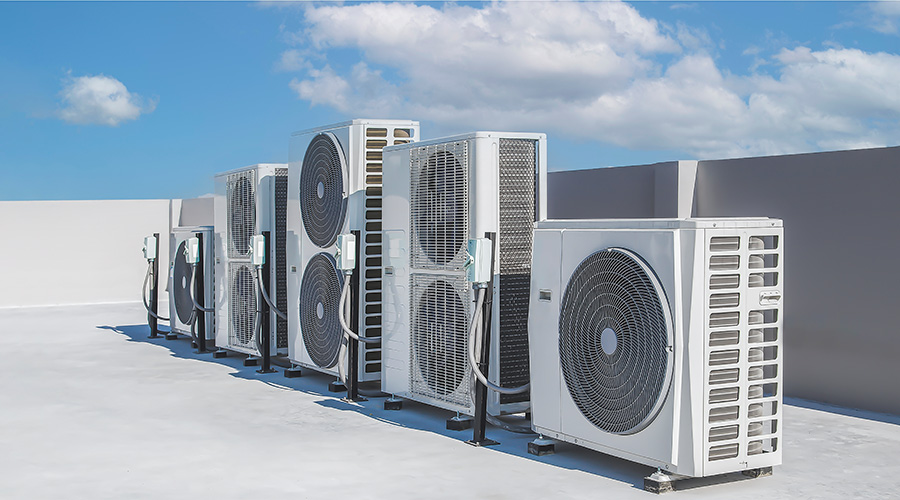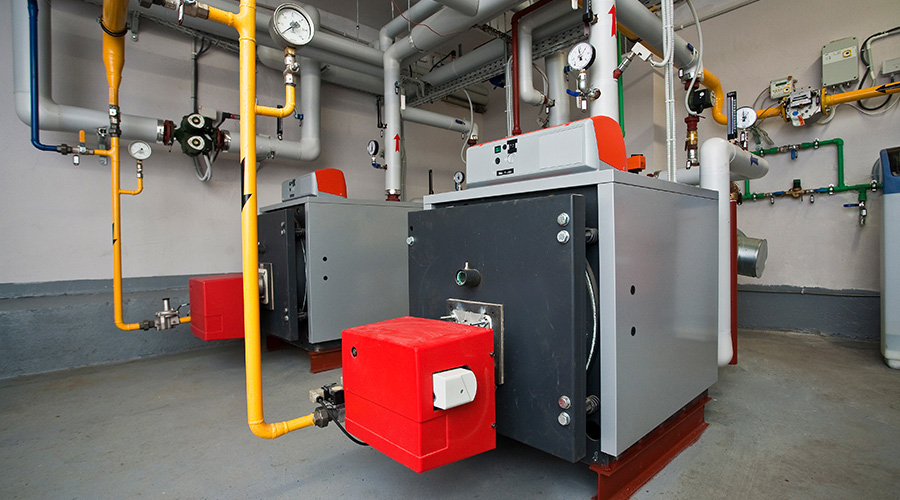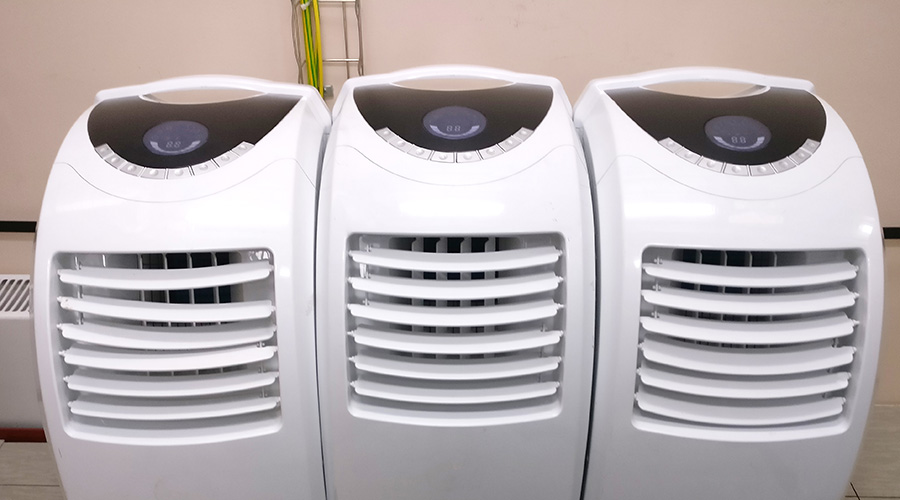In Conjunction with the Air-Conditioning & Refrigeration
IAQ: Tools & Strategies
Improving indoor air requires understanding indoor pollutants, technology to measure them and actions to remove them
Institutional and commercial facilities rely on huge amounts of conditioned air daily, and public scrutiny regarding the contents and effects of indoor air is growing. Given these parallel needs for proper indoor air quality (IAQ), maintenance and engineering managers have a vested interest in employing the proper equipment and tests to ensure indoor environments are healthy.
Generally, there are five characteristics of air that are used to classify its quality: temperature, moisture, contaminants, light and noise.
If managers and technicians can maintain these characteristics at tolerable levels, both building occupants and visitors have a greater feeling of well-being, are less stressed, and have no adverse health effects. If technicians cannot keep these characteristics at tolerable levels, complaints ranging from discomfort to illness such as fever, headaches, lung problems or infection can result.
Signs of Trouble
More than one-half of IAQ problems are due to inadequate ventilation, according to studies conducted by the National Institute of Occupational Safety and Health. Other major causes are indoor-air contaminants that include dust vapors; microbial contaminants; building furnishings and fabrics; and unknown causes. Ventilation-caused problems are more than three times more frequent than the next leading cause and exceed all other causes combined.
Better ventilation can reduce not only this dominant cause of pollution but all the others, as well. Other factors to consider in overall IAQ are temperature, humidity and noise. Methods for removing air pollutants include increased ventilation, pollutant-source control, and air cleaners, such as carbon filters, mechanical filters, electrostatic precipitators and desiccants that remove bioaerosols, particulates, organic chemicals and smoke.
In many instances, a strong case can be made that the primary reasons for inadequate ventilation are poor maintenance and a large backlog of deferred maintenance. If a facility tour reveals the following symptoms, it’s time to take action:
- air intake or exhaust filter access door propped open
- dirty filters
- poor housekeeping in mechanical-equipment spaces
- mechanical-equipment spaces used as storage areas
- improper steam trapping
- plugged strainers
- fans shut down
- energy-management system turned off
- humidifier turned off
- water heaters off-line
- chiller stages not operating
- missing insulation
- cooling towers dirty, where slime buildup is evident
- piping leakage is evident
- non-operative controls on variable-air-volume systems
- non-operative air louvers
- dirty, dust-filled air ducts.
Serious liability due to illness, safety hazards, and even death can result if these symptoms are left unattended. If they are widespread, filming them with a video camera to document the problem and give building owners proof that it is time to commit resources to remedying the situation.
Monitoring Options
Addressing a reported problem as part of an IAQ program can be done using in-house resources, conferring with air-handling equipment supplier, or using a testing lab. A log of reported problems should contain the nature of the problem who reported it, when, and outdoor weather conditions at the time. More sensitive individuals should not be ignored because the cumulative effects might generalize a problem that this person noticed first.
Monitors come in personal, portable and stationary varieties. The active types draw air into the sampler and perform real-time analysis. With passive types, the air diffuses into the sampler, so a long time is required for accurate results. Some units are classified as analyzers, which gives an instantaneous readout, depending on the concentration. Others are classified as collectors, which gather a sample into a suitable medium for later analysis.
Personal monitors. These monitors are used to measure concentrations of inorganic gases such as carbon dioxide (CO2), carbon monoxide (CO), nitrogen dioxide (NO2), and sulfur dioxide. One frequently used CO monitor measures 1,600 data points in 24 hours with automatic data logging. It continually draws air through a pump to a deionized water cell. The CO reacts with water, and the CO concentration in air is read directly from an LED display.
Portable and stationary monitors. Four types of samplers are: air displacement; condensation; gas washing, or absorption; and adsorption. In the air-displacement method, a sample is collected in an evacuated flask or plastic bag. In the condensation method, a sample is passed through a U-tube and cooled below the pollutant’s boiling point. Gas washing is done by bubbling the sample through an impinger, in which the sample dissolves or reacts with. Adsorption uses activated carbon, silica gel, molecular sieves, or polymeric filters.
To select the proper IAQ monitoring technology, managers must know the building, its furnishing materials and other conditions, such as combustion and chemical reactions in a chemistry lab or outdoor pollutants present in the area.
One IAQ monitoring system available includes the ability to monitor air-flow volume, CO, CO2, relative humidity, temperature, and pressure differential. It can be used as a continuous or spot monitor.
Gas analyzers for boiler rooms measure toxic gas levels, including carbon monoxide, nitric oxide, NO2, and sulfur dioxide.
Leak detectors are available for detecting several refrigerant gases, such as R12, R22, and R502 with one instrument by changing the position of a switch.
On the Horizon
Several areas related to IAQ bear close scrutiny for managers seeking new options.
Source control. This means of controlling air quality received renewed credibility as a result of a test conducted during the construction of a new office building. The entire building was built using new construction methods and building-material combinations. Techniques included: hardwood floors covered in places with wool rugs but no carpets; no office partitions; and wood or metal furnishings. Paint and wallpaper were minimized throughout. Total volatile organic compounds in the new building were far below those of two comparable buildings built with traditional methods and materials.
Ventilation. Ventilation improvements will continue, especially those that enhance ventilation with conserving energy. Improved economizer design will be used increasingly. Air-to-air exchanges will allow more more frequent air changes while reducing energy demands by recovering heat from the exhaust air — up to 85 percent — and reusing the heat in the supply air in cold weather and the reverse in warm weather.
Air cleaning. More development is under way in the area of catalytic converters for building use. Added to activated charcoal absorbers, for example, platinum catalysts increase the absorber efficiency substantially. Care is needed to ensure that the converter does no convert a slightly hazardous material into a more hazardous one. The efficiency of air cleaners also is affected by the humidity. Increased use of humidifiers and dehumidifiers will control this air-quality factor to 40-60 relative humidity, the most healthy range for building occupants and visitors.
Spotlight: ARI
The Air-Conditioning and Refrigeration Institute (ARI) is the national trade association representing manufacturers of more than 90 percent of the North American produced central air conditioning and commercial refrigeration equipment.
As one of its most important functions, ARI develops and publishes technical standards for industry products. ARI standards establish rating criteria and procedures for measuring and certifying product performance. May standards are accepted as American National Standards.
Click for information on ARI’s resources and activities, e-mail or call (703) 524-8800.
|
Related Topics:











